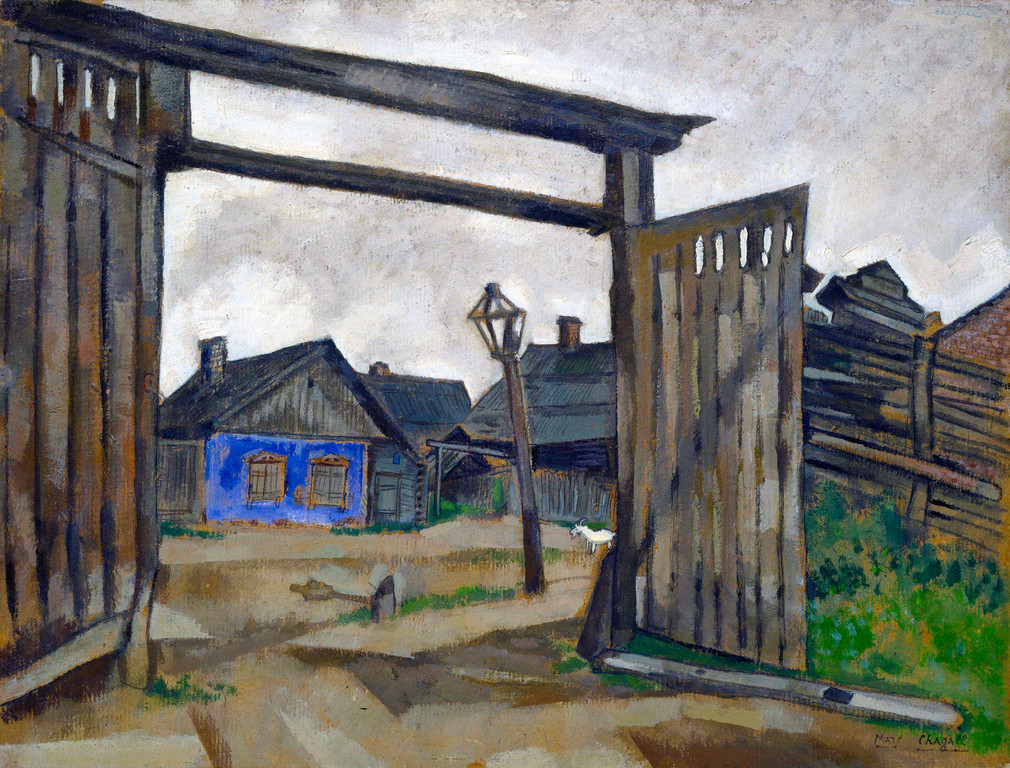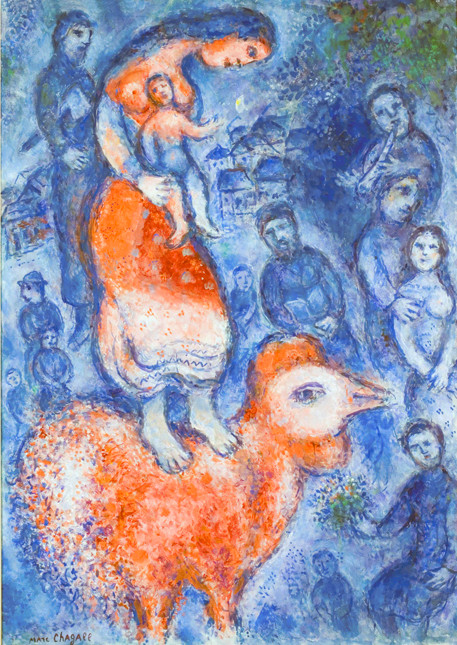Marc Chagall's vibrant world on view at Nassau County Museum of Art
A look at the artist and his life
As Labor Day beckons and we shake off those last lazy days of summer, it’s time to look ahead to a new season of artistic exploration. The region’s museums are energized for fall and ready to unveil a wide range of offerings that will hold wide appeal for all.
Among them, Nassau County Museum of Art is welcoming throngs of visitors to its new exhibit, “Chagall,” which opened in July and continues through Nov. 4. For most of fall, the museum will be a treasure house of works by Marc Chagall, including 50 of the 105 hand-colored etchings of Bible stories that he produced in 1957. None of these etchings have been seen on Long Island before, and have rarely been on view in museums.
Another 47 paintings complete this exhibition of Chagall’s works. This 20th century master, who died in 1985, stayed true to his roots throughout the years he devoted to his art.
Throughout a long and distinguished career, Chagall incorporated facets of his early Russian-Jewish heritage into his multilayered works. His storytelling paintings portray a fantastic world where people and animals float upside down or sideways, irrespective of the laws of gravity, and couples are always in love. Chagall’s brilliantly colored memories of family and village life are set amidst the houses and streets of his native Vitebsk, captured by his hypersensitive imagination that he shared with viewers.
The Bible etchings on view are on loan from the Haggerty Art Museum of Marquette University in Milwaukee. Chagall’s biographer, Franz Meyer, wrote: “Chagall’s ties with the Bible are very deep indeed; the forms that people its world are a part of his own inner life, part of the living Jewish heritage, and thus are archetypes of a greater, more intensive world.” In “Marc Chagall – The Graphic Works,” Meyer speculates that the significance of the Bible in Chagall’s work was rooted in his early childhood experiences in Russia.
The show had its impetus in an idea proposed by Arnold Saltzman, NCMA’s founding president and now executive vice president, who proposed an ambitious exhibition that would make the museum’s galleries a vast treasure trove of Chagall’s work. The museum’s former director, Constance Schwartz, was enlisted to organize this important undertaking.
Marc Chagall, born in 1887, was the eldest of nine children born to a poor Russian-Jewish family in Vitebsk. His artistic talent was evident early with a distinctive style of images from childhood emerging during his studies with Leon Bakst in St. Petersburg. Working in Paris from 1910 to 1914, Chagall began to produce paintings inspired by Russian folklore and village life. In 1914, prior to the start of World War I, Chagall returned to Russia, ascending to the post of Commissar for Fine Arts in Vitebsk. It was there that he produced works that were to become his most famous – images in strong, bright colors depicting otherworldly states that fused fantasy, nostalgia and religion. He left Russia in 1922. Thereafter he remained in France permanently, save for the years of the Nazi occupation when he fled to the safety of New York and its environs.
“We want to show the special joy of this incredible artist and translate that joy from his art to the viewers,” Schwartz said. “Through this exhibit you will experience the general extravagance of Chagall’s feelings about life. People have a link with his wonderful stories. We wanted to establish that Chagall was a storyteller free from influences of the 20th century movements. He was an artist in exile all of his life, who really never felt at home until later in life when he returned to France. In his exile, he kept painting of his time in Vitebsk.”
Although Chagall carried the feeling of being Jewish all his life, “he did not want to be thought of as a Jewish painter,” said Schwartz, “but as a painter of the world.”
The exhibit is not a retrospective, according to Schwartz, rather “a selection of pieces that give you a good feeling about the artist and his work.” To that end, the 50 bible etchings, exhibited on the museum’s second floor, offer insight into another facet of Chagall’s artistic explorations. After he had moved to France, at the start of the Russian Revolution, Chagall was commissioned in 1932 to create a series of Bible etchings, and he traveled to Palestine for inspiration. After he was back in France, Chagall’s work on these etchings were interrupted when he was forced to leave France as French Jews were being rounded up and sent to concentration camps. Following his years in New York, and upon his return to France, Chagall published his colored etchings in 1957.
“These are beautiful pieces that tell all the Bible stories that we know and love,” said Schwartz. “Chagall came from a pious family and was familiar with the Bible. He has created a living imagery that we can all relate to.”
As always, the museum offers related programs to enhance visitors’ enjoyment of the exhibition. “Artists of the 20th Century: Marc Chagall,” a 50-minute film that explores Chagall’s Russian-Jewish roots, is screening daily through Nov. 4. On Sept. 15, a klezmer band presents a concert of the spirited music heard at Jewish weddings and celebrations in the Russia of Chagall’s youth. Lunchtime lectures about the exhibition will be offered on Sept. 20 and Oct. 25. On Oct. 6, Schwartz discusses Chagall and the works included in the exhibition. The following week, on Oct. 13, art historian and author Charles A. Riley II, Ph.D. returns to the museum with a talk about Chagall’s artwork for the performing arts, especially opera and dance.
Children’s programs include “Discover Chagall’s Childhood World,” on Oct. 20, which features a petting zoo to echo the animal characters seen in Chagall’s paintings of his native Vitebsk; children then will be guided in creating pastel representations of their own neighborhoods. Log onto nassaumuseum.org/events for details on these and other programs at the museum.
‘Chagall’ at Nassau County Museum of Art

 50.0°,
Overcast
50.0°,
Overcast 









